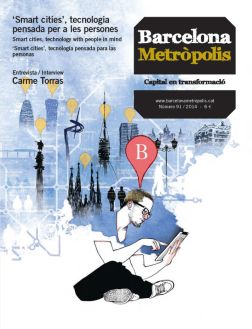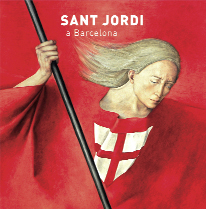[Saint George in Barcelona]
- Narcís Sayrach (text), Consol Bancells (photographs)
- Barcelona City Council
- Barcelona, 2014
- 287 pages
Socrates turned the inscription at the entrance to the temple of Delphi, “Know thyself”, into one of his philosophical mottos: if you want to be able to understand and appreciate the world and everything around you, the first thing you should do is understand yourself; if this premise is unstable, so too are all the evaluations and opinions that depend on it.
In our world of low-cost flights, where it seems it has become an inescapable necessity to travel as far as our bank balance will stretch, and to the most far-flung and exotic locations – where none of our friends have yet managed to get – if at all possible, nothing could be more opportune than the publication of books reminding us that Voltaire was right when he said, “the best is the enemy of the good”. In other words, all too often we have seen the Great Wall of China and Machu Picchu up close, and yet we are unable to say where Plaça de Sant Felip Neri or Magòria Station are.
That is why we should welcome, with open arms, Sant Jordi a Barcelona, created by the four hands of Consol Bancells and Narcís Sayrach. I say “by the four hands” deliberately, because the photos of one and the words of the other are so complementary – they fit almost perfectly – that it gives the impression they were created simultaneously from a single voice or vision.
As Francesc Fontbona indicates in his foreword, this book, which aims to establish a detailed inventory of “the strong presence of Saint George in Barcelona”, manages to exceed the intentions of the Image and Publishing Services Department of the Catalan capital’s City Council: “to show the general public those treasures that are normally overshadowed” by the city’s more well-known cultural and tourist attractions.
Before beginning his meticulous tour, Sayrach introduces the figure of this “universal saint”, both from a historical perspective: “The story of Saint George is based on the testimony of the Christian churches shortly after his death, in the fourth century”; and as a legend: “When there is a gap […] in history […] they enhance the facts and make the person mythical. […] And the more they love the character, the more they embellish them and glorify everything, and so legends are born.” This combination has made the saint one of the (artistic) symbols of Catalonia’s identity as well as that of Barcelona.
Next, accompanied by the enriching photographs of Bancells, we discover, step by step to our surprise and admiration, the “[more than two hundred] recorded representations of St. George in the city of Barcelona”.
Starting with the Palau de la Generalitat, where a large number of all kinds images of the knight of the sword and the rose give us an idea of his iconographic evolution, from the fifteenth century to the present day, we continue on to other public buildings (City Hall, Hospital de Sant Pau, Can Serra, etc.), on our journey of discovery through museums (including the Museu Nacional d’Art de Catalunya, the Museu del Modernisme and the Museu Diocesà), we visit various places of worship in the Mediterranean metropolis and finish with the countless public spaces where the saint is present: from Carrer Casp to the square that bears his name, on Montjuic.
At the end of our unexpected and attractive pilgrimage, we will have undoubtedly found, amongst so many diverse places, one in which we have truly felt the first two lines of “Notes d’un viatger” [Notes of a Traveller], a wonderful poem by Joan Sales published in Viatge d’un moribund [Journey of a Dying Man]:
“Enamorat fidel de tot el que és estrany [A true lover of all that is strange],
en aquest port podria fer niu el teu afany [in this port could nest your desire].”





Pingback: Sant Jordi a Barcelona, Consols Bancells i Narcís Sayarach